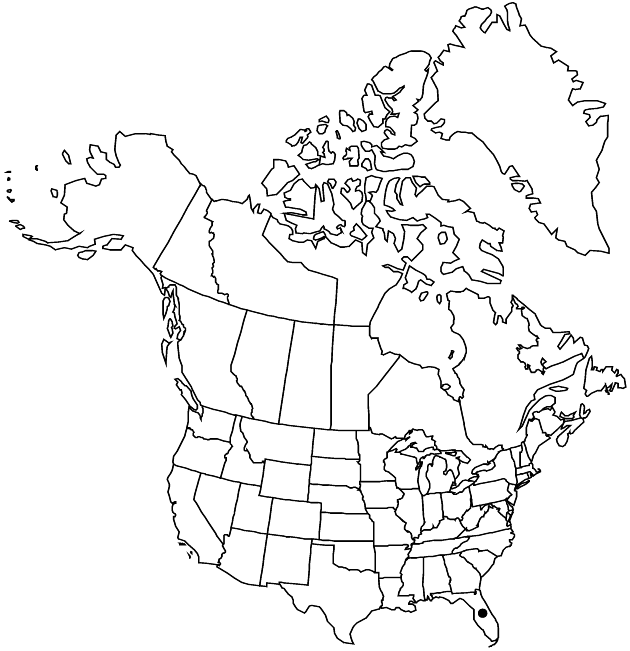Borrichia arborescens
in A. P. de Candolle and A. L. P. P. de Candolle, Prodr. 5: 489. 1836.
Stems decumbent to ascending. Leaves (at least mid cauline) oblanceolate to linear, 5–10(–15) × 0.4–2 cm, margins entire or dentate to serrate (teeth remote mostly toward apices), faces glabrous or sericeous (sometimes on same leaf). Heads borne singly or (3–6) in cymiform arrays (peduncles 0.5–5 cm). Involucres ovoid to hemispheric, (8–)10–14(–17) mm. Phyllaries 10–16 in 3–4 series (chartaceous in fruiting heads, outer ovate-elliptic, apices obtuse or acute, faces glabrate or sericeous; inner oblanceolate, apices rounded, obtuse, or acute, faces glabrous). Paleae: apices obtuse to acute. Ray florets 7–15; laminae 5–8 × 2.5–4 mm. Disc florets 20–50; corollas 5–6 mm, lobes 1–1.5 mm. Cypselae 3.5–5 mm, 4-angled. 2n = 28.
Phenology: Flowering late spring–summer.
Habitat: Rocky coasts, sandy marshes, beaches
Elevation: 0–10 m
Distribution

Fla., West Indies, Bermuda.
Discussion
Borrichia arborescens grows in the Florida Keys, Bermuda, and the West Indies, including Jamaica and Guadeloupe. Plants of B. arborescens are usually glabrous; both glabrous and hairy plants occur in the northern West Indies. Common names that include “tree” are misleading because the plants are shrubs.
Selected References
None.
